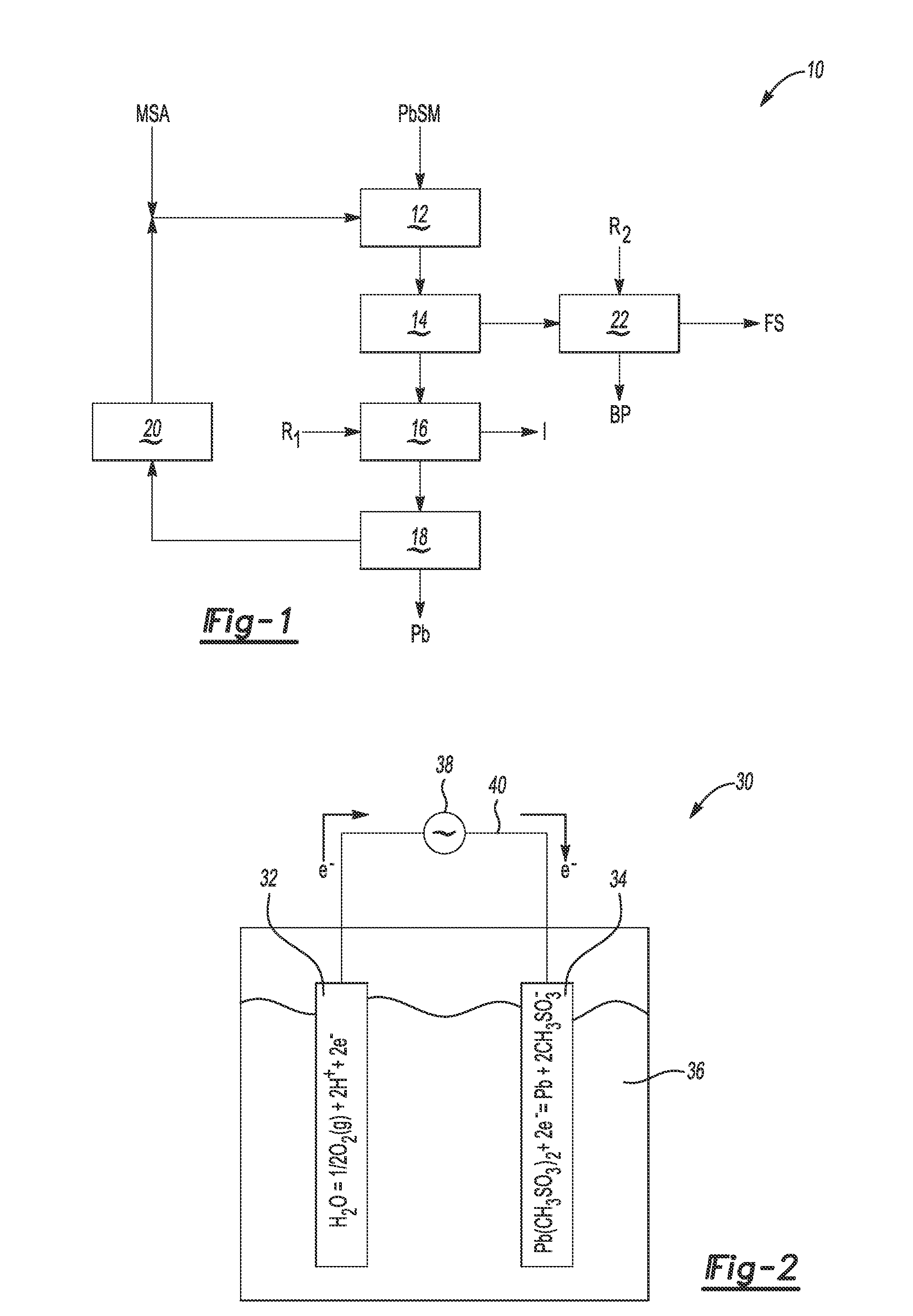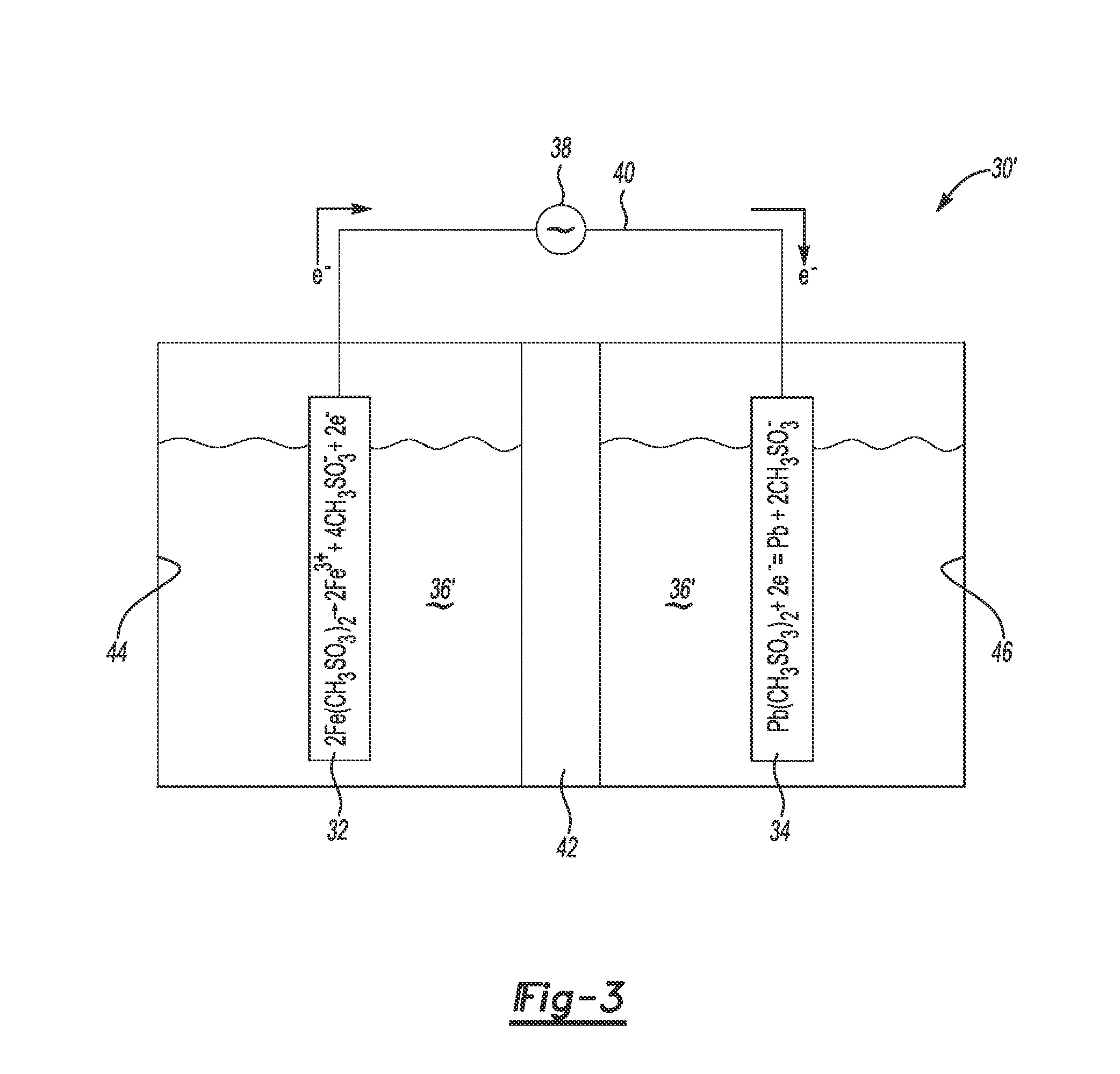Recovering lead from a lead material including lead sulfide
a lead material and lead sulfide technology, applied in the field of lead material including lead sulfide recovery, can solve the problems of difficult control and/or containment of volatile products
- Summary
- Abstract
- Description
- Claims
- Application Information
AI Technical Summary
Benefits of technology
Problems solved by technology
Method used
Image
Examples
example
Leaching of Lead Using Ferric Methane Sulfonate and MSA
[0051]A lead sulfide flotation concentrate containing 54.27% Pb, 15.29% Zn, 5.07% Fe, 0.20% Al, 0.14% C (inorganic) and 20.36% S (total) was obtained. X-Ray Diffraction with Rietveld Analysis was performed to identify the minerals in the concentrate. This analysis revealed that the concentrate included 0.9% hydrocerussite (Pb3(CO3)2(OH)2), 59.8% galena (PbS), 7.2% anglesite (PbSO4), 21.2% sphalerite ((Zn,Fe)S), 6.8% pyrite (FeS2), 1.3% marcasite (FeS2), and 2.8% quartz (SiO2).
[0052]The particle size of the concentrate was −75+48 microns (i.e., greater than 48 microns and smaller than 75 microns). A solution of ferric methane sulfonate and methane sulfonic acid was used. The solution had a methane sulfonic acid concentration of 0.5 mol / L and a ferric concentration (as Fe3+) of 0.25 mol / L.
[0053]2 g of the concentrate was added to 500 mL of the solution in a 1 L baffled stirred reactor immersed in a water bath. The mixture was stir...
PUM
| Property | Measurement | Unit |
|---|---|---|
| particle size | aaaaa | aaaaa |
| temperature | aaaaa | aaaaa |
| temperature | aaaaa | aaaaa |
Abstract
Description
Claims
Application Information
 Login to View More
Login to View More - R&D
- Intellectual Property
- Life Sciences
- Materials
- Tech Scout
- Unparalleled Data Quality
- Higher Quality Content
- 60% Fewer Hallucinations
Browse by: Latest US Patents, China's latest patents, Technical Efficacy Thesaurus, Application Domain, Technology Topic, Popular Technical Reports.
© 2025 PatSnap. All rights reserved.Legal|Privacy policy|Modern Slavery Act Transparency Statement|Sitemap|About US| Contact US: help@patsnap.com



